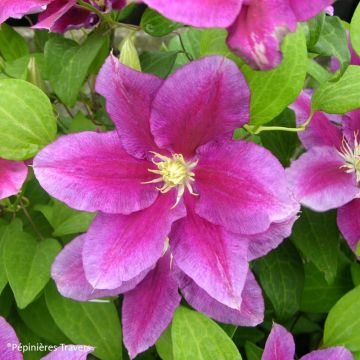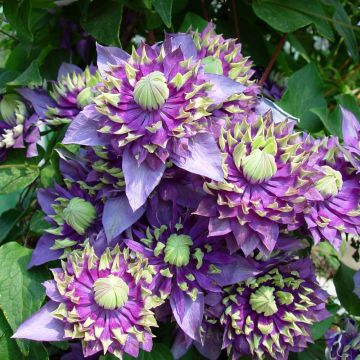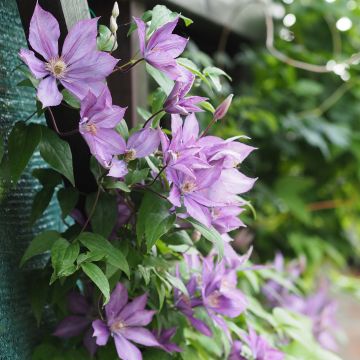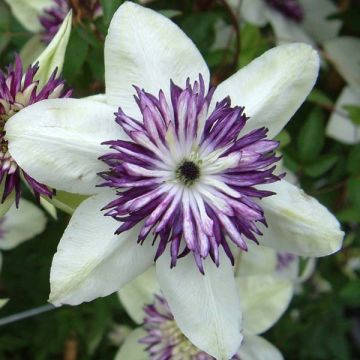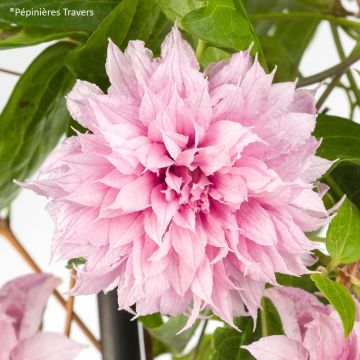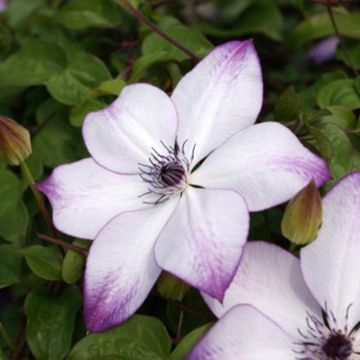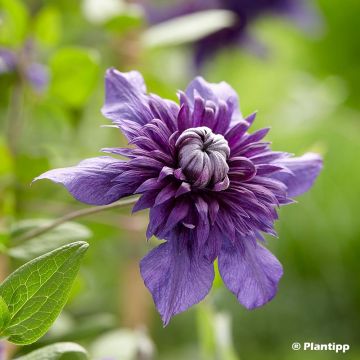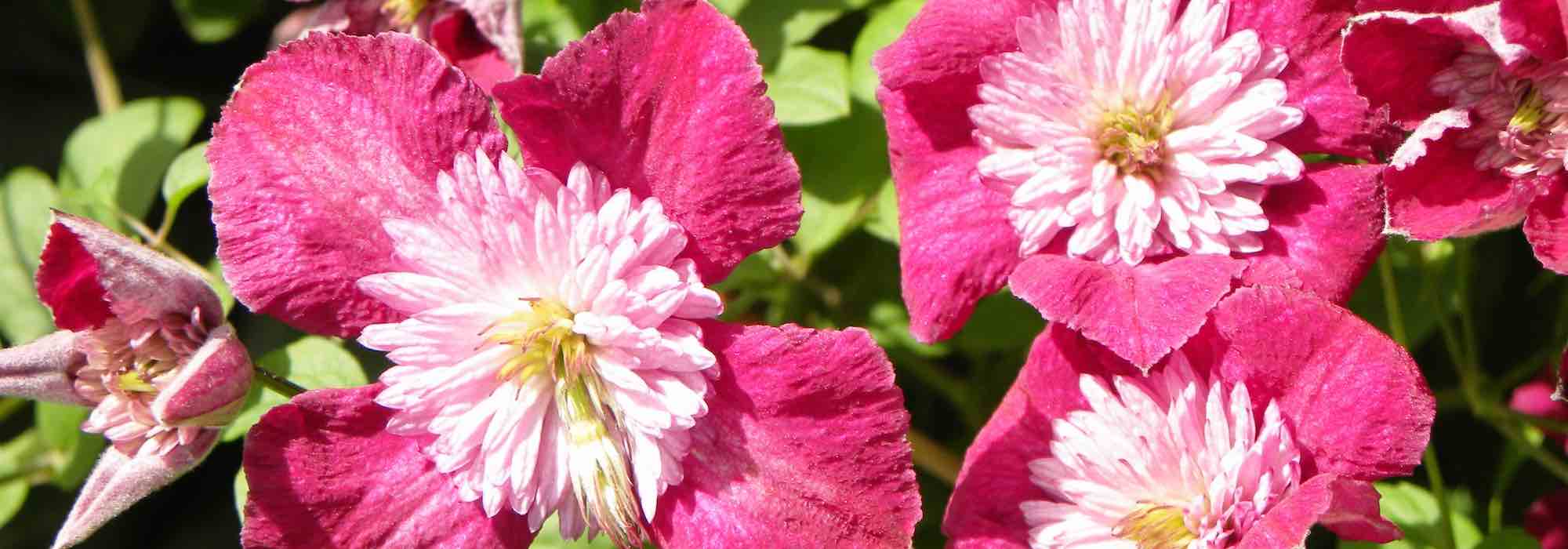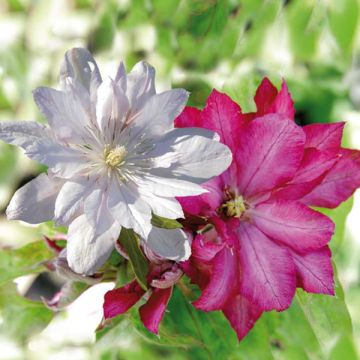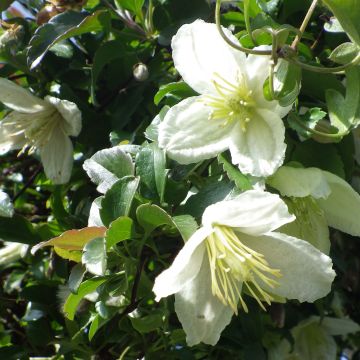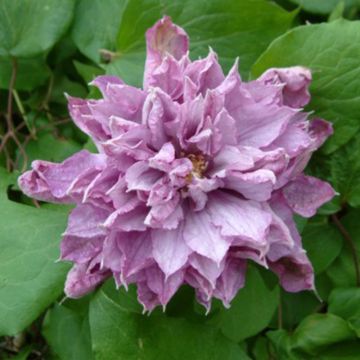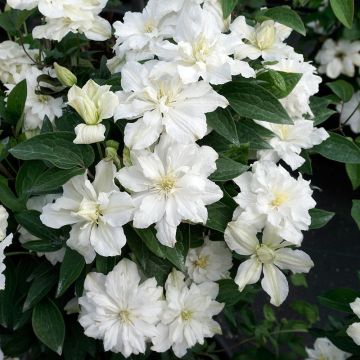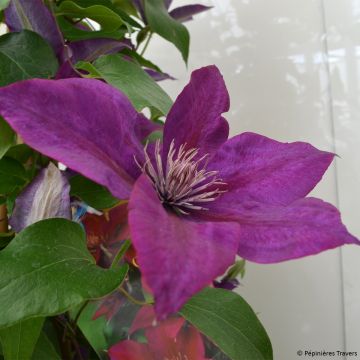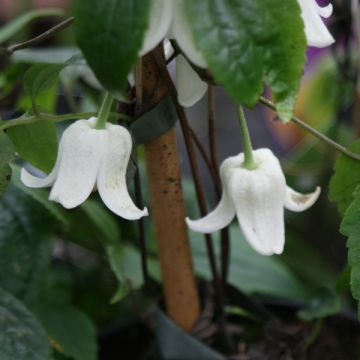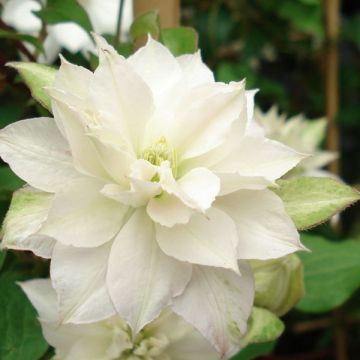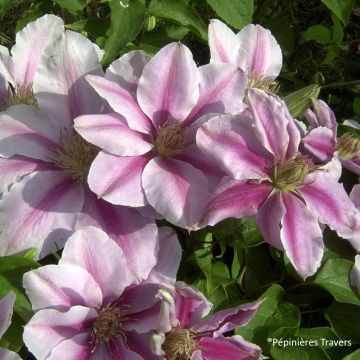

Clematis florida Lavallée n°1
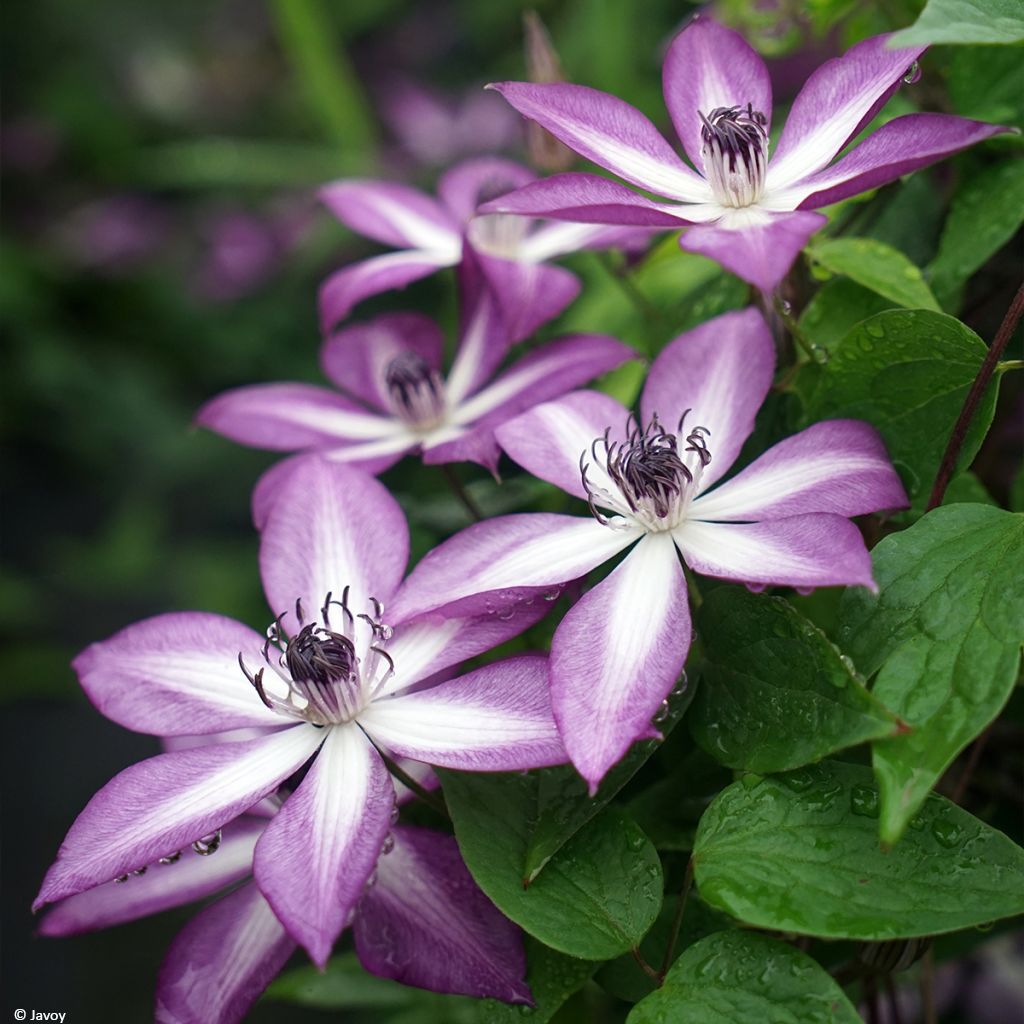

Clematis florida Lavallée n°1
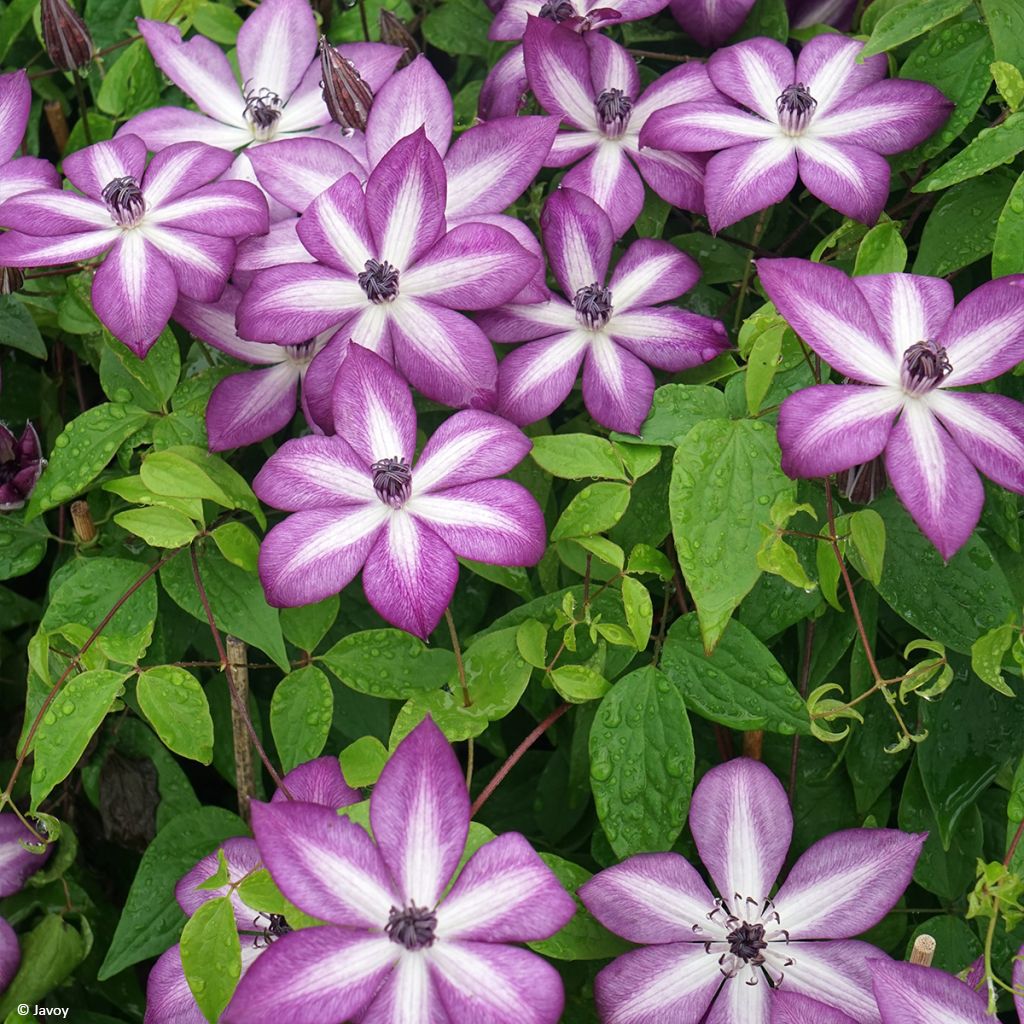

Clematis florida Lavallée n°1
Clematis florida Lavallée n°1
Clematis x florida Lavallée n°1
Order received on time Despite the seemingly careful packaging, the young plant arrived uprooted... We immediately planted it, but it dried up.
Nathalie , 23/05/2024
Special offer!
Receive a €20 voucher for any order over €90 (excluding delivery costs, credit notes, and plastic-free options)!
1- Add your favorite plants to your cart.
2- Once you have reached €90, confirm your order (you can even choose the delivery date!).
3- As soon as your order is shipped, you will receive an email containing your voucher code, valid for 3 months (90 days).
Your voucher is unique and can only be used once, for any order with a minimum value of €20, excluding delivery costs.
Can be combined with other current offers, non-divisible and non-refundable.
Home or relay delivery (depending on size and destination)
Schedule delivery date,
and select date in basket
This plant carries a 6 months recovery warranty
More information
We guarantee the quality of our plants for a full growing cycle, and will replace at our expense any plant that fails to recover under normal climatic and planting conditions.

Would this plant suit my garden?
Set up your Plantfit profile →
Description
Clematis 'Lavallée n°1' is a recent hybrid variety classified in the group of Clematis florida, just like the lovely variety 'Sugar Sweet'. It is a climbing plant that stands out with its large single flowers, beautifully bi-coloured in white and violet-blue, with a variable colour that creates a nice gradient throughout the plant. This deciduous climbing clematis blooms abundantly in two waves: first in May-June and then in September-October. With a medium to modest size, it fits easily into a small garden or in a pot on a patio.
Clematis 'Lavallée n°1' is a very recent Dutch creation by Ton Hannink. Clematis is a deciduous climbing plant that belongs to the Ranunculaceae family. In general, it prefers light, deep, moist, fertile, and neutral soil. It appreciates a sunny or partially shaded exposure, with the base of the plant always in shade. Rather hardy, the 'Lavallée n°1' variety can withstand short frosts of about -15°C (5°F) once mature. It is suitable for container cultivation if the container is large enough (minimum 60cm (24in) in diameter).
Clematis 'Lavallée n°1' can reach a height of 2.5m (8ft) with a spread of 1m (3ft). The star-shaped flowers with six petals, 11cm (4in) in diameter, appear on the current year's shoots from May to June. The abundant flowers are solitary or grouped in clusters. They emerge from bright violet buds. They stand upright and have 6 elongated diamond-shaped tepals, with a violet-blue border and a wide central white band. A prominent cluster of violet stamens sits at the heart. The white central area is crossed by violet-blue veins. This white area varies in width depending on the flowers. The leaves are a fairly light olive-green and dry up in autumn. This clematis clings to a support or the host plant through petioles transformed into tendrils.
Plant your clematis alongside climbing roses to extend the flowering of walls and pergolas until the end of summer. Place them next to beautiful perennials such as geraniums, Salvia nemorosa, and phlox, which will provide the shade it appreciates at its base. This genus is rich and diverse, with varieties available in all colours, shapes, and sizes. Take advantage of this diversity to give your garden a romantic and bohemian touch. 'Lavallée n°1' deserves a place near the house or a pathway. It also loves to twine around bushes and performs well in a large pot.
Clematis florida Lavallée n°1 in pictures
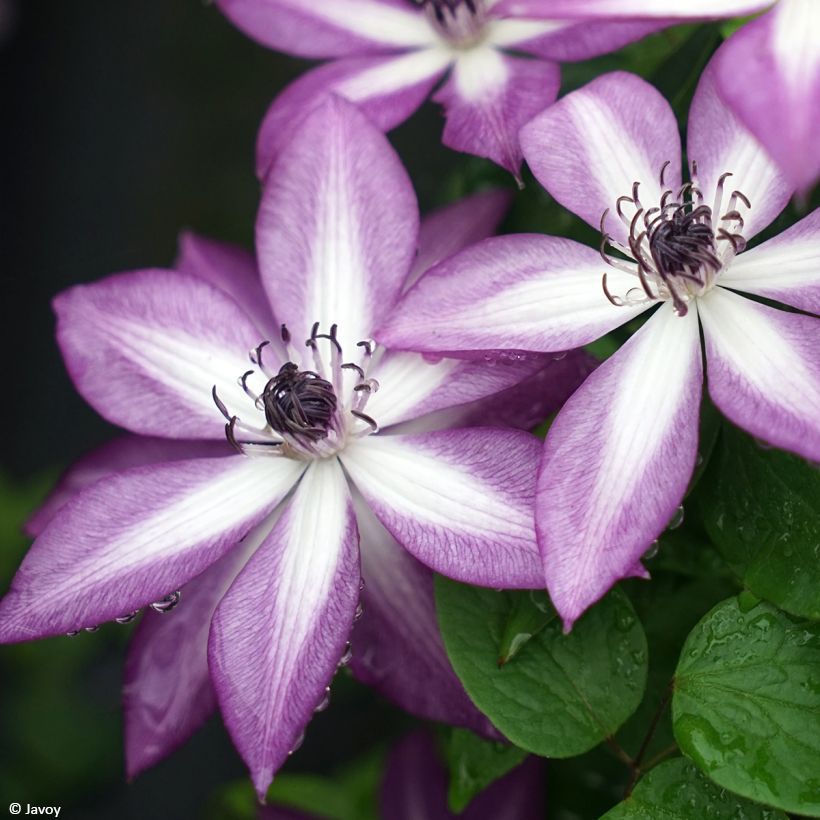

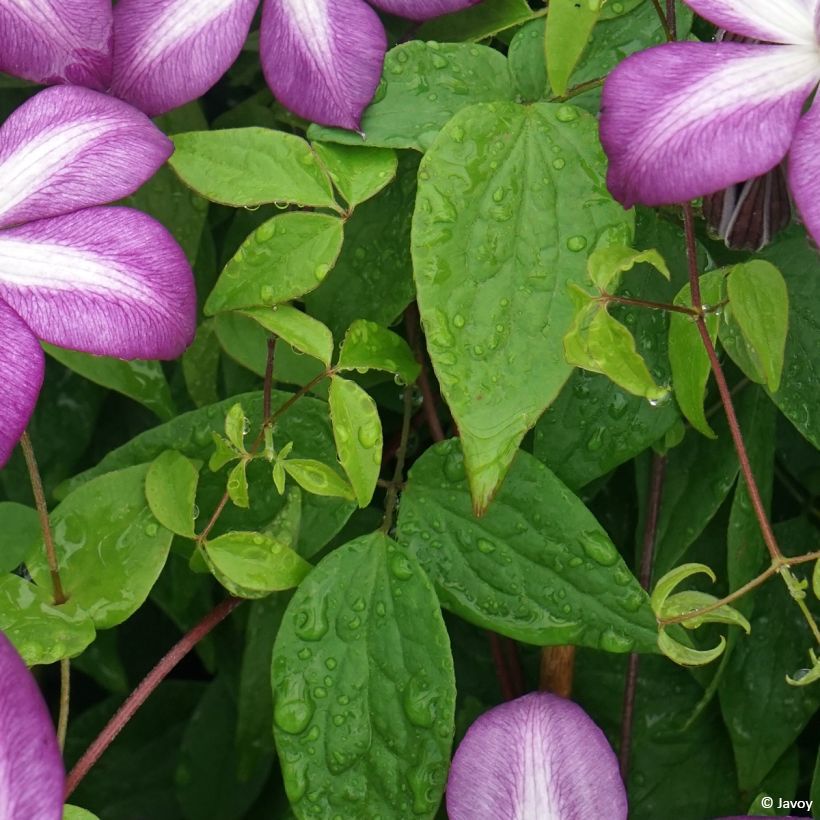

Plant habit
Flowering
Foliage
Botanical data
Clematis
x florida
Lavallée n°1
Ranunculaceae
Cultivar or hybrid
Other Clematis Florida
View all →Planting and care
In a sunny location, shade the base of your plant with a ground cover plant or a perennial geranium. Clematis plants like to have their feet cool. Plant your clematis by placing the top of the root ball at ground level (do not bury it) in soil worked to a depth of 20cm (8in), lightened with good compost. During the first few weeks, water abundantly and regularly. Clematis plants cling on their own with their tendrils. To promote their growth, provide them with a trellis support or let them dress the trunk of a tree by placing a wire mesh against it. Clematis plants also like to grow freely on neighbouring plants. You can prune them quite vigorously (cut back to 50cm (20in)) at the end of winter in March. Clematis florida are susceptible to mildew in a greenhouse with a humid atmosphere.
Planting period
Intended location
Care
Planting & care advice
-
, onOrder confirmed
Reply from on Promesse de fleurs
Similar products
Haven't found what you were looking for?
Hardiness is the lowest winter temperature a plant can endure without suffering serious damage or even dying. However, hardiness is affected by location (a sheltered area, such as a patio), protection (winter cover) and soil type (hardiness is improved by well-drained soil).

Photo Sharing Terms & Conditions
In order to encourage gardeners to interact and share their experiences, Promesse de fleurs offers various media enabling content to be uploaded onto its Site - in particular via the ‘Photo sharing’ module.
The User agrees to refrain from:
- Posting any content that is illegal, prejudicial, insulting, racist, inciteful to hatred, revisionist, contrary to public decency, that infringes on privacy or on the privacy rights of third parties, in particular the publicity rights of persons and goods, intellectual property rights, or the right to privacy.
- Submitting content on behalf of a third party;
- Impersonate the identity of a third party and/or publish any personal information about a third party;
In general, the User undertakes to refrain from any unethical behaviour.
All Content (in particular text, comments, files, images, photos, videos, creative works, etc.), which may be subject to property or intellectual property rights, image or other private rights, shall remain the property of the User, subject to the limited rights granted by the terms of the licence granted by Promesse de fleurs as stated below. Users are at liberty to publish or not to publish such Content on the Site, notably via the ‘Photo Sharing’ facility, and accept that this Content shall be made public and freely accessible, notably on the Internet.
Users further acknowledge, undertake to have ,and guarantee that they hold all necessary rights and permissions to publish such material on the Site, in particular with regard to the legislation in force pertaining to any privacy, property, intellectual property, image, or contractual rights, or rights of any other nature. By publishing such Content on the Site, Users acknowledge accepting full liability as publishers of the Content within the meaning of the law, and grant Promesse de fleurs, free of charge, an inclusive, worldwide licence for the said Content for the entire duration of its publication, including all reproduction, representation, up/downloading, displaying, performing, transmission, and storage rights.
Users also grant permission for their name to be linked to the Content and accept that this link may not always be made available.
By engaging in posting material, Users consent to their Content becoming automatically accessible on the Internet, in particular on other sites and/or blogs and/or web pages of the Promesse de fleurs site, including in particular social pages and the Promesse de fleurs catalogue.
Users may secure the removal of entrusted content free of charge by issuing a simple request via our contact form.
The flowering period indicated on our website applies to countries and regions located in USDA zone 8 (France, the United Kingdom, Ireland, the Netherlands, etc.)
It will vary according to where you live:
- In zones 9 to 10 (Italy, Spain, Greece, etc.), flowering will occur about 2 to 4 weeks earlier.
- In zones 6 to 7 (Germany, Poland, Slovenia, and lower mountainous regions), flowering will be delayed by 2 to 3 weeks.
- In zone 5 (Central Europe, Scandinavia), blooming will be delayed by 3 to 5 weeks.
In temperate climates, pruning of spring-flowering shrubs (forsythia, spireas, etc.) should be done just after flowering.
Pruning of summer-flowering shrubs (Indian Lilac, Perovskia, etc.) can be done in winter or spring.
In cold regions as well as with frost-sensitive plants, avoid pruning too early when severe frosts may still occur.
The planting period indicated on our website applies to countries and regions located in USDA zone 8 (France, United Kingdom, Ireland, Netherlands).
It will vary according to where you live:
- In Mediterranean zones (Marseille, Madrid, Milan, etc.), autumn and winter are the best planting periods.
- In continental zones (Strasbourg, Munich, Vienna, etc.), delay planting by 2 to 3 weeks in spring and bring it forward by 2 to 4 weeks in autumn.
- In mountainous regions (the Alps, Pyrenees, Carpathians, etc.), it is best to plant in late spring (May-June) or late summer (August-September).
The harvesting period indicated on our website applies to countries and regions in USDA zone 8 (France, England, Ireland, the Netherlands).
In colder areas (Scandinavia, Poland, Austria...) fruit and vegetable harvests are likely to be delayed by 3-4 weeks.
In warmer areas (Italy, Spain, Greece, etc.), harvesting will probably take place earlier, depending on weather conditions.
The sowing periods indicated on our website apply to countries and regions within USDA Zone 8 (France, UK, Ireland, Netherlands).
In colder areas (Scandinavia, Poland, Austria...), delay any outdoor sowing by 3-4 weeks, or sow under glass.
In warmer climes (Italy, Spain, Greece, etc.), bring outdoor sowing forward by a few weeks.































